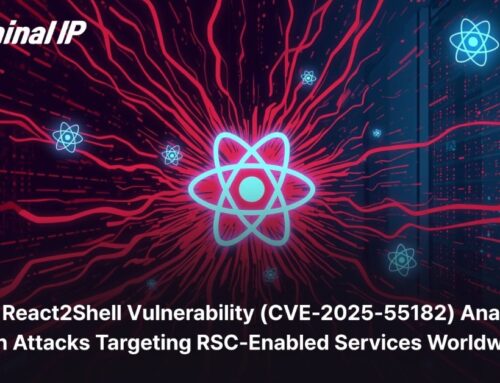
How to Conduct a Secure Code Review – Tools and Techniques
The Unseen Guardians: Mastering Secure Code Review
In the relentless pursuit of robust software, one practice stands as a proactive defense mechanism against the insidious threat of security vulnerabilities: secure code review. This critical security discipline systematically examines software source code to identify and remediate security flaws before they ever reach production environments. By integrating comprehensive code scrutiny early in the Software Development Lifecycle (SDLC), development teams can significantly mitigate the risk of potential breaches, safeguarding sensitive data and preserving organizational integrity. This meticulous process isn’t merely an audit; it’s a strategic imperative that transforms reactive incident response into proactive risk prevention.
Why Secure Code Review is Non-Negotiable
The digital landscape is rife with threats, and vulnerable code serves as an open invitation for malicious actors. A single unaddressed vulnerability can lead to devastating consequences, from data breaches and financial losses to reputational damage and compliance penalties. For instance, vulnerabilities related to improper input validation, such as CVE-2023-38831, which allowed for arbitrary code execution in certain systems, highlight the critical need for early detection. Secure code review empowers organizations to:
- Identify Vulnerabilities Early: Discover and fix flaws when they are cheapest and easiest to remedy, rather than post-deployment.
- Reduce Attack Surface: Systematically eliminate potential entry points for attackers.
- Enhance Code Quality: Foster better coding practices and security awareness among developers.
- Ensure Compliance: Meet regulatory requirements and industry standards like GDPR, HIPAA, and PCI DSS.
- Protect Reputation and Trust: Prevent security incidents that erode customer and stakeholder confidence.
Key Principles of an Effective Code Review
Conducting a truly effective secure code review requires adherence to several core principles:
- Holistic Approach: Don’t just look for specific vulnerability patterns; understand the application’s entire architecture, data flow, and threat model.
- Tooling and Manual Review Balance: Leverage automated tools to cover repetitive tasks and a baseline, but always complement them with expert human analysis for nuanced findings and business logic flaws.
- Developer Engagement: Foster a collaborative environment where developers are part of the solution, understanding findings and learning from them.
- Regularity: Code reviews should not be a one-off event but an integrated, continuous part of the SDLC, especially throughout continuous integration/continuous delivery (CI/CD) pipelines.
- Contextual Understanding: A vulnerability that is high-risk in one application might be low-risk in another due to compensating controls. Assess findings within the specific application’s context.
Techniques for Conducting Secure Code Reviews
Several techniques can be employed during a code review, each offering distinct advantages:
Automated Static Application Security Testing (SAST)
SAST tools analyze source code, bytecode, or binary code without executing the application. They are designed to find common coding errors and security vulnerabilities such as SQL injection, Cross-Site Scripting (XSS), and buffer overflows. Tools like Checkmarx, SonarQube, and Fortify are widely used. While SAST can quickly scan large codebases, it may produce false positives and often struggles with vulnerabilities requiring the context of a running application or complex business logic flaws.
Manual Code Review (White-Box Testing)
This involves human security experts meticulously examining code line by line. Manual review is invaluable for identifying logical flaws, design weaknesses, authentication issues, and authorization bypasses that automated tools often miss. It requires deep understanding of security principles, common attack vectors, and the specific application’s business logic. An example of a vulnerability likely to be missed by automated tools but caught by manual review is a flawed state machine, where the order of operations could be manipulated to gain unauthorized access, similar to some logic flaws seen in applications affected by CVE-2023-2825.
Pair Programming and Peer Review
Integrating security awareness into standard development practices. When developers review each other’s code, they can catch not only functional bugs but also potential security issues. This fosters a culture of security and distributes security knowledge throughout the team.
Threat Modeling
Before diving into code, understanding potential threats and attack surfaces through threat modeling helps focus the review effort. By identifying assets, potential attackers, and common attack paths, reviewers can prioritize critical code sections for scrutiny. This proactive approach helps in uncovering design-level vulnerabilities.
Tools for Secure Code Review
A robust secure code review strategy typically integrates a combination of automated and manual approaches. Here are some categories of tools that facilitate the process:
| Tool Category | Purpose | Examples |
|---|---|---|
| SAST (Static Application Security Testing) | Automated analysis of source code for known vulnerabilities. | SonarQube, Fortify, Checkmarx, Snyk Code |
| IDE Plugins | Real-time feedback on security issues directly within the developer’s environment. | SonarLint, Snyk Vulnerability Scanner (IDE extensions) |
| Code Collaboration Platforms | Facilitating peer review and discussion around code changes. | GitHub, GitLab, Bitbucket (with security add-ons) |
| Dependency Scanners | Identify vulnerabilities in open-source libraries and third-party dependencies. | OWASP Dependency-Check, Snyk Open Source, Renovate |
| Manual Review Checklists/Guides | Structured guidance for human reviewers to ensure comprehensive coverage. | OWASP ASVS (Application Security Verification Standard), customized internal checklists |
Remediation Actions and Best Practices
Identifying vulnerabilities is only half the battle; effective remediation is crucial.
- Prioritize Findings: Categorize vulnerabilities based on severity, exploitability, and business impact. High-risk issues should be addressed first.
- Developer Education: Provide specific, actionable remediation advice. Explain the vulnerability, its potential impact, and how to fix it securely. This is a learning opportunity.
- Regression Testing: After fixes are implemented, re-test the affected code to ensure the vulnerability is fully mitigated and no new issues have been introduced.
- Policy Enforcement: Integrate security gates into your CI/CD pipeline, failing builds if critical vulnerabilities are detected.
- Document Findings: Maintain a clear record of identified vulnerabilities, their remediation status, and lessons learned for future prevention.
Conclusion
Secure code review is an indispensable component of a proactive cybersecurity strategy. By systematically examining software source code, organizations can identify and neutralize security vulnerabilities before they escalate into costly breaches. The combination of powerful automated tools with the irreplaceable insight of human expertise forms the bedrock of an effective review process. Integrating these practices into the SDLC not only protects digital assets but also cultivates a deeply ingrained culture of security, setting the standard for resilient software development. Embrace secure code review; it’s an investment in your organization’s security posture and long-term success.





